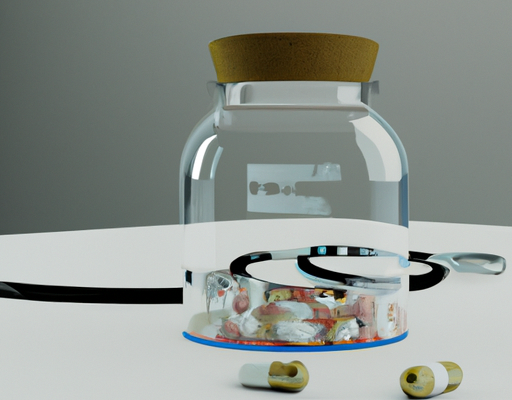Definition of neovascularization
Neovascularization is a term used to describe the process of forming new blood vessels. In the context of diabetes, neovascularization is a key feature of diabetic retinopathy, a common diabetic complication which affects eyesight. In diabetic retinopathy, blood vessels become damaged and unable to deliver oxygen and nutrients to the cells of the retina. Neovascularization is a natural response to the disruption of normal blood delivery. New blood vessels form to keep the retinal cells fed, but the new vessels formed are often unhealthy and can exacerbate diabetes-related vision issues. Neovascularization is one of many complex processes which contribute to the development and progression of diabetic retinopathy.
Definition of diabetes
Diabetes is a serious metabolic disorder that affects an individual’s ability to produce and utilize insulin. It occurs when the body cannot produce enough insulin, or when the body cannot use the insulin it does produce effectively. As a result, excess glucose accumulates in the bloodstream, leading to a variety of health problems. Diabetes is classified into two types – Type 1 and Type 2. Type 1 diabetes is caused by an autoimmune disorder which results in the destruction of insulin-producing cells in the pancreas, while Type 2 diabetes is caused by a combination of lifestyle and genetic factors. People with diabetes must be very careful to monitor their blood sugar levels and take steps to ensure proper nutrition and healthy lifestyle. Left untreated, diabetes can lead to major organ damage, including heart, kidney and nerve malfunction. Complications can include vision loss, stroke and other serious health problems.
Causes of diabetic neovascularization
Diabetic neovascularization is a major health concern in those who suffer from diabetes. It occurs when a person’s blood vessels become obstructed due to a build up of sugars and fats. This blockage in the blood vessels limits blood flow to the extremities and can cause tissue damage and death. Many factors can contribute to diabetic neovascularization, including long-term elevated blood glucose levels, fatty deposits, and long-term inflammation. Uncontrolled diabetes can exacerbate existing problems with the blood vessels, leading to an increased risk of diabetic neovascularization. Additionally, those who suffer from chronic kidney disease, hypertension, high cholesterol, and other issues associated with chronic diabetes may experience increased difficulty in regulating their blood flow and an increased risk of diabetic neovascularization. Proper medical care and lifestyle alterations can reduce the risk of diabetic neovascularization and help to address pre-existing conditions that may cause future issues.
Risk factors
Diabetes increases the risk of developing a number of serious health problems. Neovascularization is one of the most common complications related to diabetes, and can lead to further health issues if not managed correctly. The following are common risk factors associated with neovascularization in those with diabetes:
- High blood sugar levels
- High cholesterol levels
- Smoking
- Obesity
- Lack of physical activity
- Family history of diabetes
It is important to take steps to reduce the risk of neovascularization in those with diabetes. This includes following your doctor’s instructions for keeping your blood sugar levels within the normal range, maintaining a healthy diet and exercise regimen, and quitting smoking if applicable.
Symptoms
Diabetes can cause numerous health problems and symptoms, many of which can be serious. Neovascularization is one of the most common complications of diabetes and can result in further health problems.
- Diabetic Retinopathy: Neovascularization can cause diabetic retinopathy, a condition in which the blood vessels in the retina become damaged. Symptoms include blurry vision and vision loss.
- Diabetic Nephropathy: Neovascularization can cause diabetic nephropathy, a condition in which the kidneys become damaged. Symptoms include fatigue, swelling in the legs, and foamy urine.
- Diabetic Neuropathy: Neovascularization can cause diabetic neuropathy, a condition in which the nerves become damaged. Symptoms include numbness, tingling, and pain in the hands and feet.
- Diabetic Foot Ulcers: Neovascularization can cause diabetic foot ulcers, a condition in which the skin breaks down and becomes infected. Symptoms include redness, swelling, and pain.
If you have diabetes, it is important to be aware of these symptoms and to seek medical attention if any of them occur. Early diagnosis and treatment can help prevent more serious complications.
Treatment
Diabetes is a serious and potentially disabling disease. It is a disease that affects millions of people around the world, and it can have significant impacts on people’s lives. However, despite the seriousness of the condition, there is hope for those living with diabetes. Through advances in healthcare technology, treatments such as neovascularization are providing new hope for managing the disease. Neovascularization involves the introduction of tiny blood vessels into the pancreas, helping to improve the body’s ability to produce insulin and better manage blood sugar levels. This cutting-edge treatment is particularly effective in helping to reduce the effects of diabetes, giving patients the opportunity to take control of their health and manage their condition. Neovascularization can also be used to treat diabetes-related complications, providing a safer and potentially more effective treatment option.
Prevention
Diabetes is a serious medical condition that affects millions of people worldwide. While there is no cure for diabetes, there are ways to manage it and prevent it from progressing. One way to do this is through neovascularization. This is a process by which new blood vessels are formed. This can help improve blood flow, reduce cholesterol levels, and improve insulin sensitivity. Neovascularization can also help reduce inflammation and improve blood sugar control. It is important to note, however, that neovascularization should not be used as a substitute for other treatments, such as diet, exercise, and medications. Therefore, it is important to speak with your doctor to determine the best course of action for managing your diabetes.





No Comments